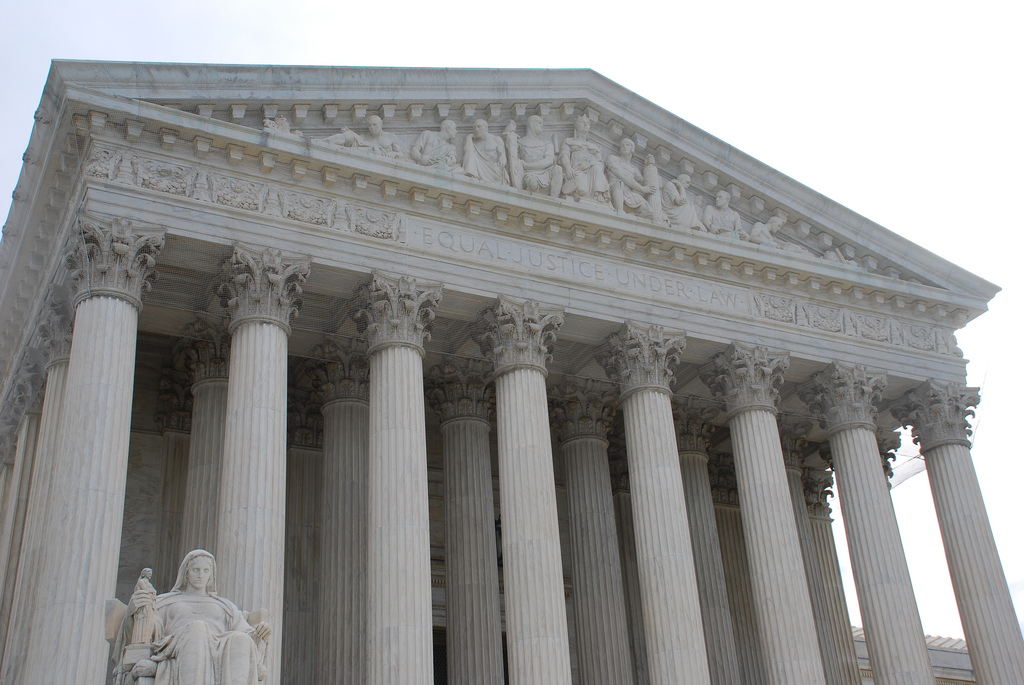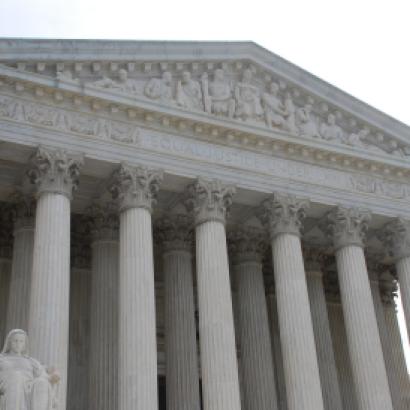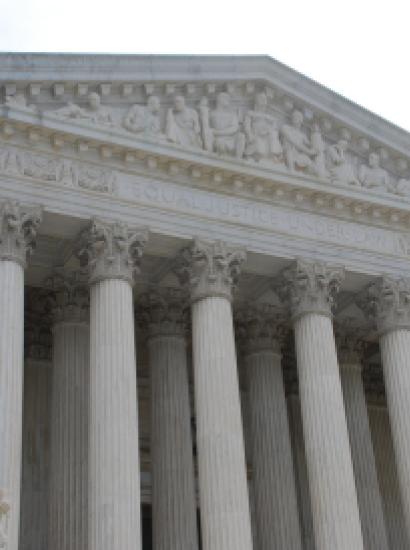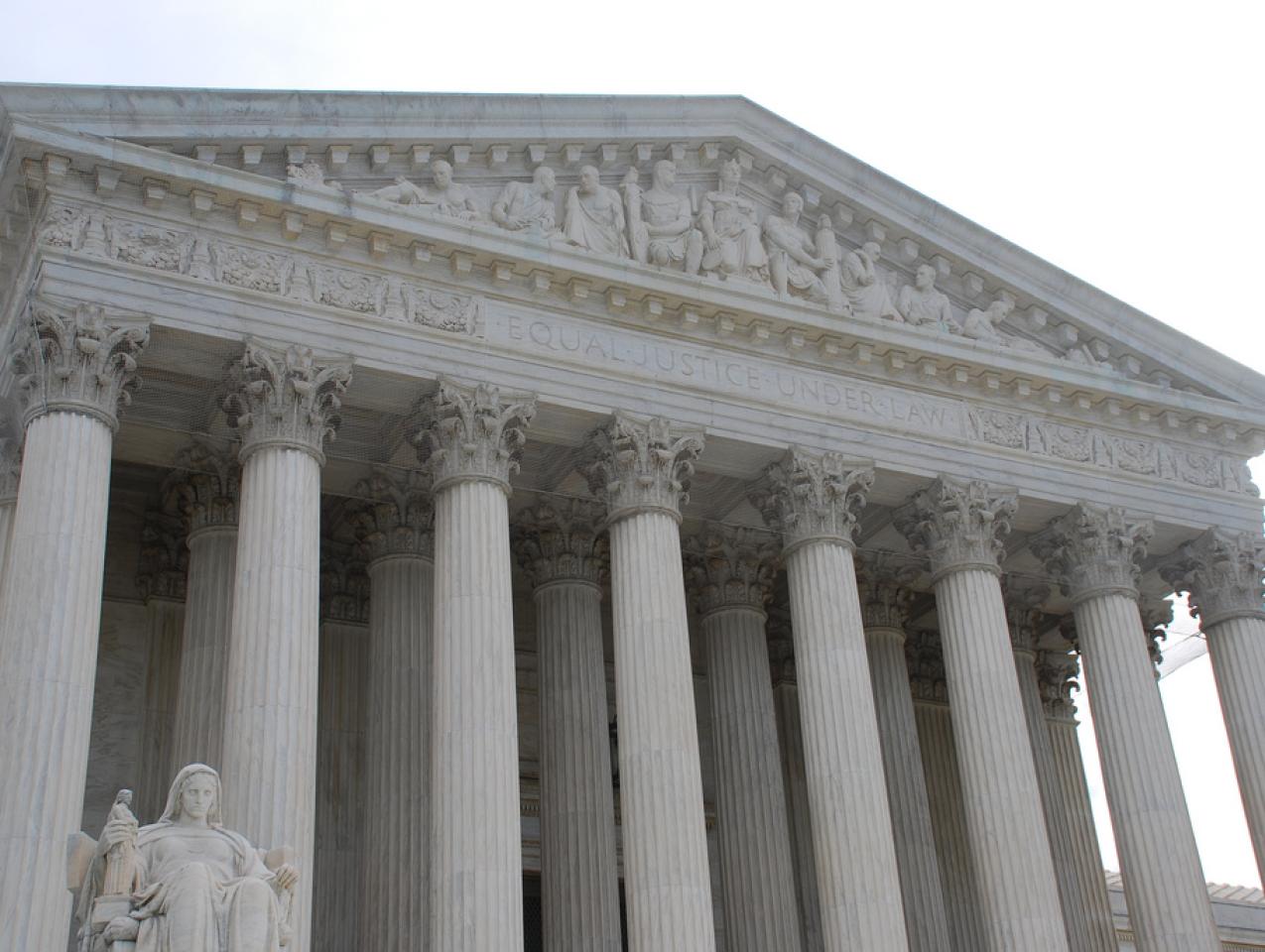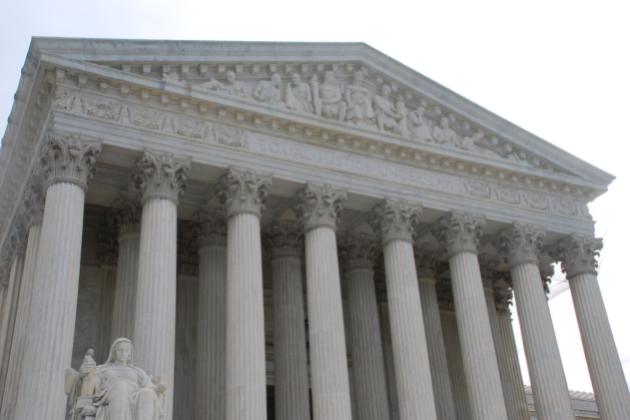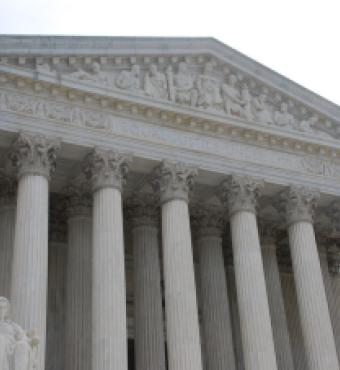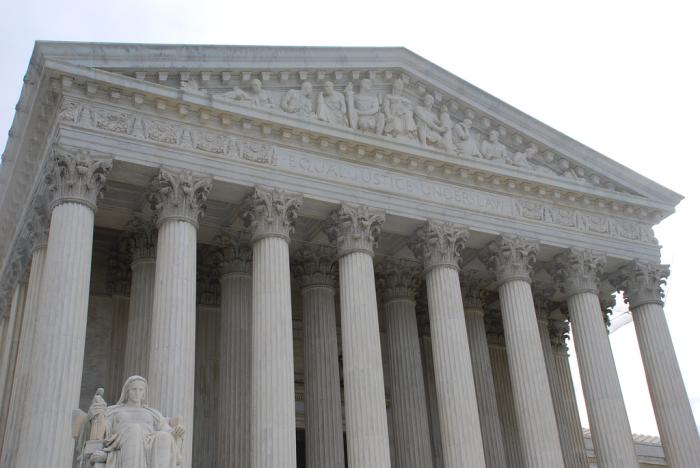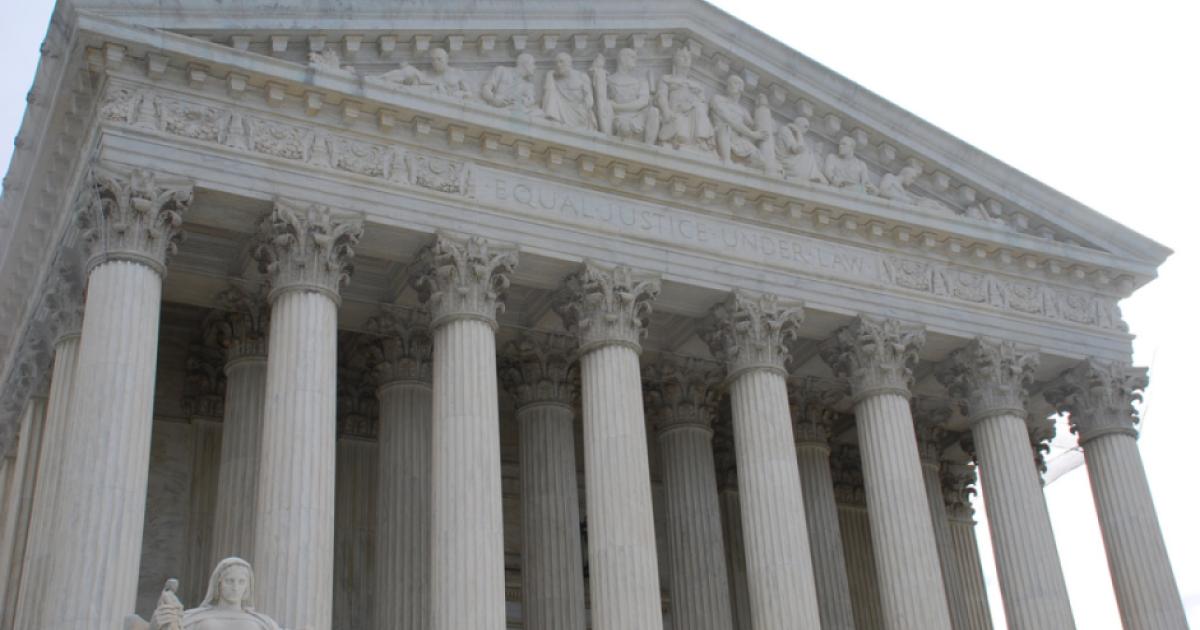- Law & Policy
This past week the Supreme Court decided to hear an important case from the Fifth Circuit, Texas Department of Housing and Community v. The Inclusive Community. The case asks the simple but vital question of whether the United States Fair Housing Act allows private parties to challenge state practices under a disparate impact theory, even when a government is cleared of any charges of conscious racial discrimination. The dispute arises because the fair housing law makes it “unlawful” for any party, either public or private, “To refuse to sell or rent . . . or otherwise make unavailable or deny, a dwelling to any person because of race, color, religion, sex, familial status, or national origin.”
In the case, the issue is whether the words “because of” required that IC be thrown out of Court when it could not show that Texas had intentionally discriminated against any minority person. The Fifth Circuit answered “no” and allowed IC to rely on key regulations of the US Department of Housing and Urban Development (HUD) that dispensed with that requirement in favor of a complex tripartite disparate impact test.
At stage one, the charging party has to show that a particular practice has a “discriminatory effect” in either creating or perpetuating segregated housing patterns because of race. At the second stage, the public body may justify its practices because they advance some “substantial, legitimate, nondiscriminatory interest.” At stage three, the charging party may override that justification by showing the legitimate ends of “the challenged practice could be served by another practice that has a less discriminatory effect.” The regulations then also provide that the plaintiff bears the burden of proof on the first and third issues. The defendant bears it on the second.
The scheme was used to challenge Texas’s administration of the federal tax subsidies made available to the states under the Low-Income Housing Tax Credit Program. The money came with tight federal strings that require Texas to give preference to projects located in low-income areas, under a “point system” that requires the state to “prioritize in descending order” eleven distinct criteria, the first three of which are “the financial feasibility of the development,” “quantifiable community participation,” and “income level of tenants of the development.” To make matters more complicated, Texas developed additional “below-the-line” criteria to supplement the stated criteria, while noting that none of these could “outweigh” any of the eleven mandated tests under the Federal statute.
Listing factors in order does not, of course, explain how each component should be weighed, but it does place some explicit constraints on discrimination in the state process. In contrast, IC’s own charter is explicitly race-based insofar as it works to find suitable housing for minority individuals in the Dallas suburbs or the non-minority areas of the city proper. IC’s challenge of the Texas allocation rested solely on a disparate impact theory because “the Department “approved tax credits for 49.7% of proposed non-elderly units in 0% to 9.9% Caucasian areas, but only approved 37.4% of proposed non-elderly units in 90% to 100% Caucasian areas.”
In dealing with a relatively modest statistical difference, the District Court found that the numbers cited established the disparate impact. It then further concluded, before the HUD regulations were in place, that even if Texas sought to achieve legitimate ends, the state had negated the possibility that the below-the-line criteria could have rectified the matter. It then imposed an onerous structural injunction on the state to comply with its mandates. In light of the regulations, the Fifth Circuit removed that structural injunction and remanded the case for review under the HUD regulations. Before that happened, the Supreme Court took the case to determine whether HUD’s tripartite standard is consistent with the command of the Fair Housing Act.
In dealing with this question, first note the enormous difference in scope between the disparate treatment and disparate impact tests. Disparate treatment cases are rarities today, as the action has shifted to disparate impact tests that got their start under the 1964 Civil Rights Act and in the seminal 1971 decision in Griggs v. Duke Power Co. Griggs struck down the use of various standardized employment tests that had a disparate impact on minority workers unless the employer could show that the test was justified by a very strict standard of “business necessity,” which is virtually never satisfied. Griggs led, by judicial action, to a massive expansion of the 1964 Civil Rights Act, by reading out of that statute an explicit provision that protected the use of these employment tests unless they were a pretext for discrimination.
Back in 1971, that fear of pretext was very widespread, especially in Southern states. But Griggs wrought an unnecessary overkill of an important employer tool, which is still widely used whenever there is no disparate impact, as in professional sports. The overkill of this approach became apparent with the 1982 decision in Connecticut v Teal, in which the Supreme Court took the absurd position that it was still incumbent to ferret out discrimination in state-run programs with an explicit and bona fide affirmative action component that manifestly negated any claim of covert government discrimination.
The same logic applies to the current HUD Fair Housing regulations, which bear zero relationship to objectives of the Texas low-income program, whose rigid guidelines require that extra attention be given to low-income areas, which tend to have a higher proportion of minority residents than do the state’s higher-income areas. HUD’s left hand has no idea what its right hand is doing, given that faithful compliance with the low-income housing credit program has to have a disparate impact in order to meet its statutory mission.
At this point, the initial burden-shifting requirement to the plaintiff under the Fair Housing Law is too easy to meet. In addition, any effort to comply with the explicit terms of the low-housing regulations should count as a legitimate government interest under the Fair Housing Law. It thus becomes almost perverse, no matter what the burden of proof, to allow the charging party to conjure up some alternative scheme that has “a less discriminatory effect,” when no one can say for sure what those effects are likely to be. Does it really make sense in these low-income areas to disrupt a program for years in an uncertain effort to reduce the reported program disparity, by what, given the categorical language of “less discriminatory effect” in the regulation, could be as well one or two percent?
This shift from disparate treatment to disparate impact is, moreover, not confined solely to this one federal housing program. It also extends cover another two dozen nationwide housing programs, dealing with everything from at-risk families to migrant workers, each with its own internal complexities. In virtually every one of these cases, the statutory aid will be received disproportionately by members of minority communities. It would be absurd to argue that this known disparate racial impact makes these programs constitutionally suspect. It is equally unwise to assume that any small variation in administration should mandate a huge overreaction under the Fair Housing Act, whose key provision should not be read to frustrate the operation of separate federal programs.
Indeed, this sleight of hand is all so unnecessary. Just read the statute for what it says. In IC, no one thinks that Texas engaged in any underhanded race-conscious effort to subvert the low-income program. Indeed, the widespread public opposition today to any intentional and invidious form of government discrimination makes it highly unlikely that any such actions could survive the mass political uproar that would erupt on its discovery. Today no intrusive disparate impact test is needed to unearth covert forms of state administration. Ironically, the only race-conscious actor in this case is Inclusive Communities itself, whose action if successful could introduce a form of discrimination the statute proscribes.
At this point, the case really boils down to one of statutory interpretation. Given that the federal low housing program involves the use of federal money, no one believes that the United States or Texas, as public actors, should be able to use that money to create or perpetuate any program of racial segregation. It is more controversial whether the money could be used to advance some affirmative action proposals. But that issue is not on the table here. Instead, the only statutory issue is the meaning of the three words “because of race.” As a matter of ordinary English, these three words suggest that any party governed by the Fair Housing Act, public or private, has to have a conscious racial motive to discriminate in order to violate the law. It will not do to say that these agencies should be hauled into the dock because they rely on factors found in other statutes that, as Congress and everyone else knows, correlate positively with race. At that point, every decision is “because of race,” and the words become largely redundant.
This practice has to stop. IC represents the third case in which the Supreme Court has granted certiorari to consider this question. In Gallagher v. Magner (2010) and Mt. Holly Gardens Citizens in Action, Inc. v. Township of Mount Holly (2011), the Court had granted certiorari to consider exactly this issue when the Eighth and Third Circuits respectively showed their willingness to maintain disparate impact claims.
Both of those cases settled before being decided by the Court. That should not happen now. The statutory issues are the same in all three cases, but the dynamics of the cases are not because both Gallagher and Mount Holly involved local government programs that were not tightly controlled by separate federal statutes. Gallagher raised questions of discrimination about a City Property Maintenance Code, and Mount Holly involved a local redevelopment program. Neither program was regulated by detailed federal standards. Indeed, both programs may have presented greater opportunity for discrimination than is possible under the high-reticulated federal scheme for low-income housing subsidies.
It is important to keep these programmatic differences in perspective. At best, they only go to the likelihood of finding any kind of purposive government discrimination, to which the proofs in each case should respond. Those differences do not justify the unwise and indefensible effort for the wholesale importation of a disparate impact standard against all forms of government action. That result is inconsistent with the words “because of race” found in the Fair Housing Act. There is no reason to deviate from that text to introduce an intrusive and unworkable test that combines high administrative cost with the risk of inviting massive abuses by both the courts and the executive branch of government in enforcing the Fair Housing Law, and by implication, other antidiscrimination laws in such key areas as employment and education. The Supreme Court should use the long overdue occasion in IC to issue a well-deserved rebuke to both HUD and to the lower circuit courts against this unwise expansion of the antidiscrimination laws.







